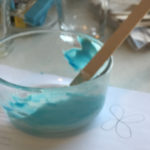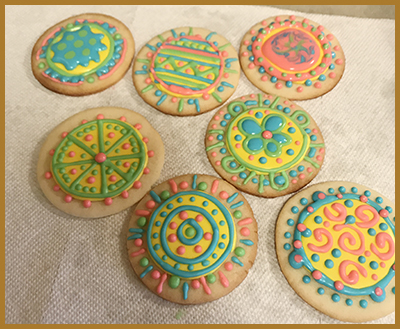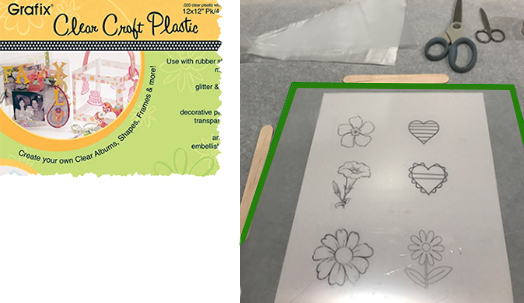Royal Icing: Planning How to Learn Your Art

OMG OMG, you mean I have to learn all this? That is what almost every online tutorial writer hopes you can avoid.
In the case of making and using Royal Icing there is, in fact, a lot to learn. Unlike butter cream icing, where all you have to do is mix and slather, Royal Icing can be shaped by your hands in numerous ways, with each way demanding different conditions and skills.
It is my hope that I can pinpoint what you need to learn in a way you can easily learn it. Of course, you need to practice. I promise, however, your practice will be easy.
Begin your practice by observing beautifully decorated sugar cookies and do so for several days until you identify the decorating styles and colors you most like. After you’ve identified your creative objectives (you probably will have more than one), you can begin your practice sessions.
Planning all starts with the excitement of envisioning the finished cookies. The following Pinterest links, which I collected over months, highlight my own design interests. Feel free to adopt some as your own:
Cookie Lace and Embroidery (highly complex Royal Icing designs)
Illustrations (many of these illustrations can be piped on cookies)
Perhaps now, when you look at the following photo, you’ll understand where I got my inspiration!
When looking at beautiful examples, note the details and try to figure out how they were made:
- Design style: Royal Icing can duplicate the ancient art of ebru, where colors sitting in a liquid medium are dragged through one another. Illustration techniques, like line drawing, can also be used, and patterns can include cute images or simple shapes and dots
- Color: If, for example, you fall in love with designs outlined in black, you’ll require more study on how to achieve it than designs outlined in pastels.
- Piping style: Do you like very thin, intricate piping strokes like the Cookie Lace examples I linked to above? Or do you like thicker outlines that are easier to achieve?
- Dots: God, I love dots! They require special skills, however, unrelated to piped lines.
- Thick or thin: I love very flat, smooth cookie frosting, possibly jazzed up with dots. Other people love thick frosting built up with piping and appliqued Royal Icing objects, like flowers.
- Design subjects: Do you like cute comical figures? Flowers? Insects? Plants? Seasonal images? Avant garde? Random?
- Commercial subjects: Want to reproduce commercial logos or representation of real things, such as a can of soda?
- Paint or Pipe: Do you love smooth Royal Icing under painted images, or do you prefer the somewhat 3-dimensional look of piped icing?
Your design and color choices all demand specific planning which is what you’ll study in this tutorial series.
Details often seem overwhelming to a beginning Royal Icing decorator, especially if that decorator does not have all the equipment and supplies needed. To address that, review the check-list in the second article of this series and stock up: Royal Icing: Assemble Supplies Before Beginning to Learn
Accept that you need planning abilities as well as Royal Icing application skills. Hopefully, this series will help you learn everything. The secret behind my belief? Do not start by baking a lot of sugar cookies for practice because you can never make enough. Instead, follow a suggestion made by Julia Usher. Frost clear plastic sheets that lay over patterns for you to trace. When done, wash the frosting off, or let the frosting harden and eat it like candy.
The images below show Grafix “Clean Craft Plastic” over printed images for tracing. I made the green outline in the photo so you can see the edges of the sheet, otherwise, they are invisible.
I started my own Royal Icing design odyssey by first learning how to flood the frosting base into a smooth, shiny surface. When dry, I proceeded to freehand decorate the hardened base using numerous colors piped with handmade parchment piping cones. Unfortunately, while the finished cookies looked cute, they did not live up to my expectations. Fortunately, friends and family liked to eat them.
The problem that held my skills back was that I was not organized. During every cookie frosting session, I missed critical items and my work area turned into a sticky mess. Yes, I produced cookies, but did so along with frustration. Hopefully, this series of tutorials will help you recognize pitfalls in order to avoid them.
Costs of Becoming a Royal Icing Artist
Unlike cake decorating, sugar cookie decoration is inexpensive. Your most expensive equipment is a heavy-duty stand mixer, such as with an excellent Hamilton Beach model under $100. You can, however, spend much more, making sure that your mixer is powered by at least a 300 watt motor.
Cash Investment in Practicing: Buy two to three, 2-pound bags of extra-fine (10X) powdered sugar. In my area, three bags of powdered sugar cost around $10 total. A boxed set of 12 Wilton gel colors runs around $12 and a 1-pound bag of meringue powder, around $17. You should become an expert for under $30.
Time Investment in Practicing: Gradually build your skills. Because you will not be practicing on real cookies and you can schedule short practice sessions using your pre-made Royal Icing, you’ll have time for short practice periods, rather than long ones that include a lot of baking and related cleanup.
The remaining tutorial articles in this series address each skill set. As it develops, I will cross-link information, plus update earlier articles as needed. If you’d like to have a report on the progress of developing the series, drop me an email at Karen@Littleviews.com and I’ll send you updates as well as ask for your opinions and insights.
Article Series
For Royal Icing recipes, CLICK HERE
To see a list of all articles in this series, CLICK HERE
Questions? Comments? Additions? Corrections? Write to Karen Little at karen@Littleviews.com
Written for Littleviews-Crafts.com by Karen Little, publisher. All rights reserved, but feel free to re-publish this article after contacting Karen so she knows where to find it.

